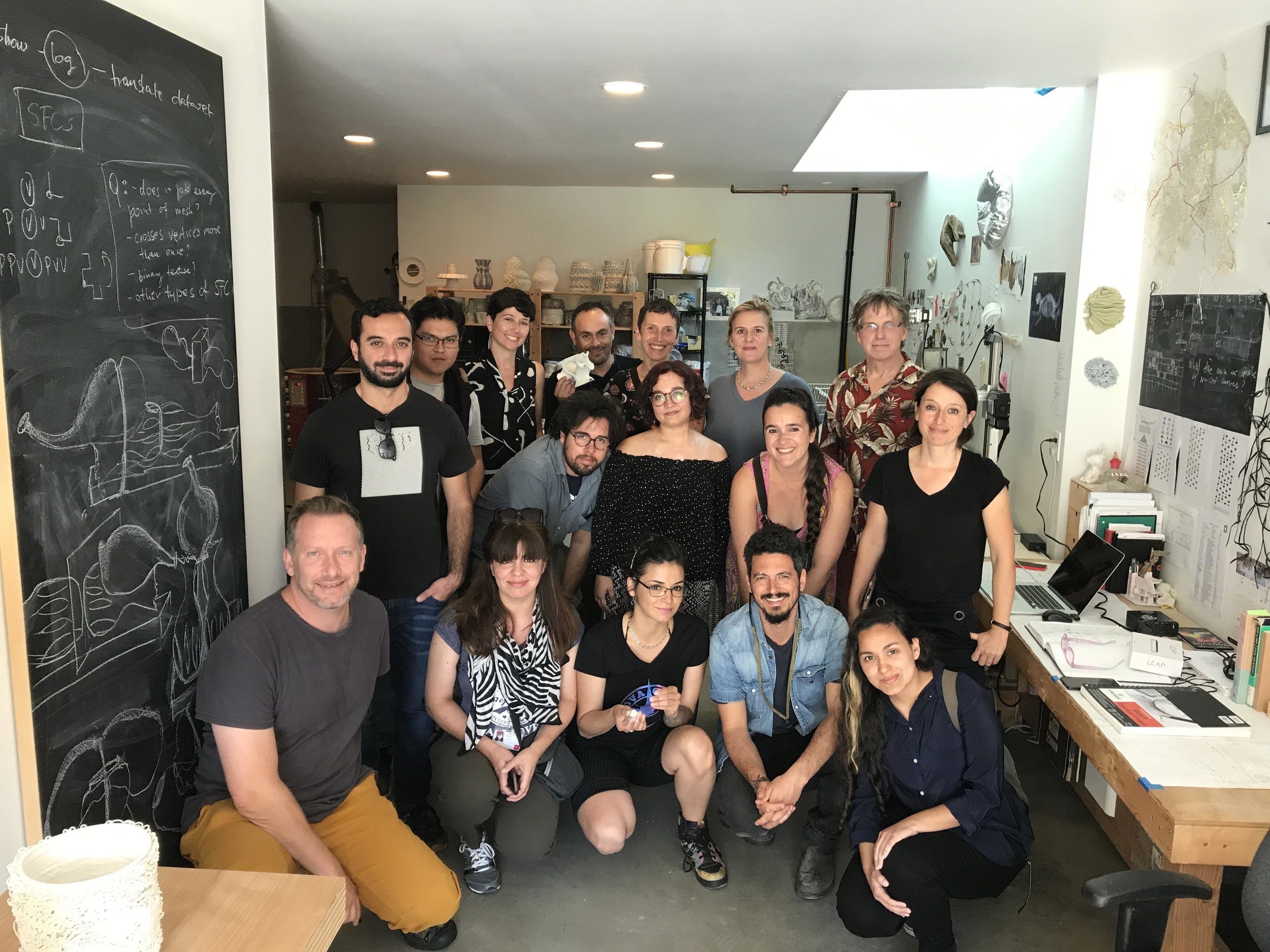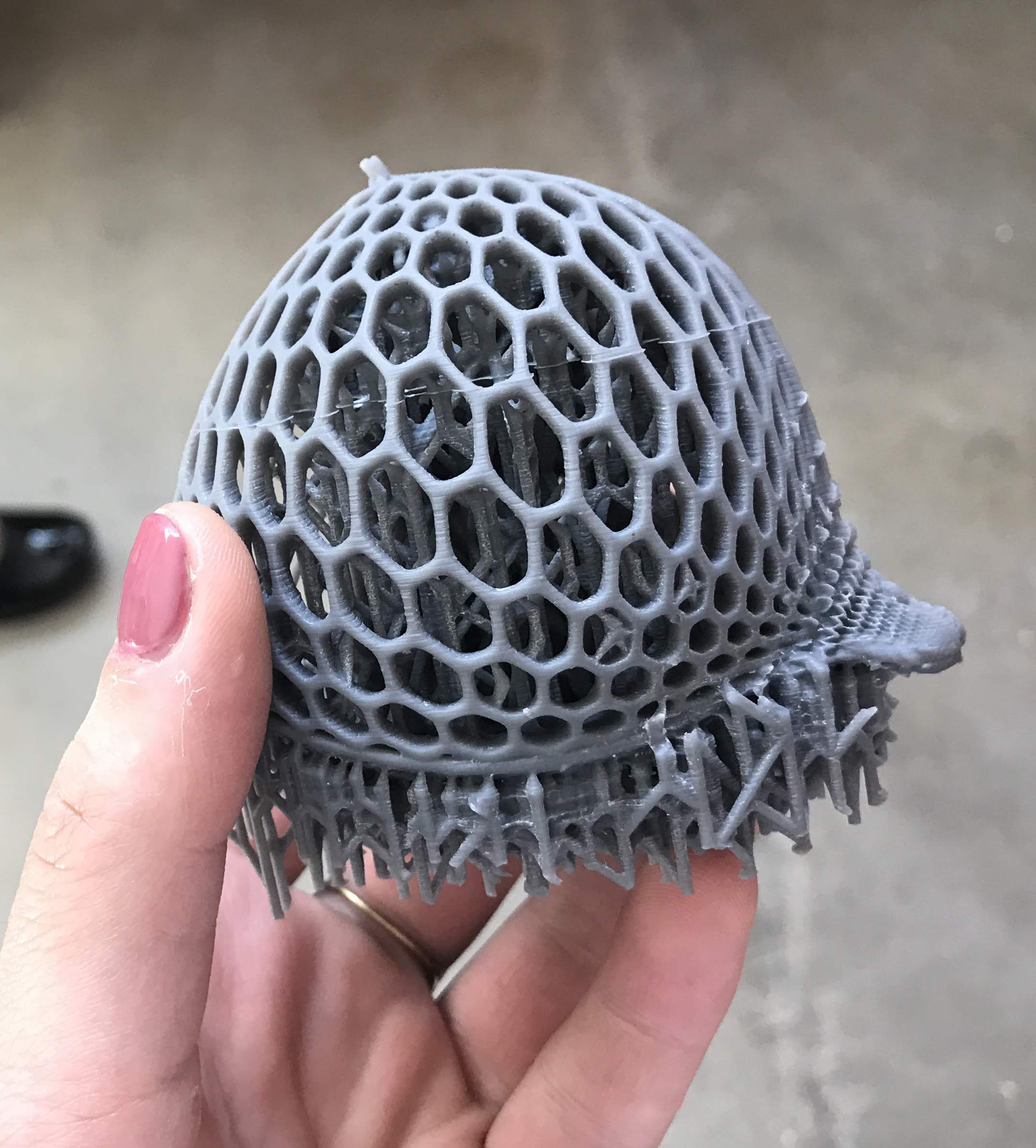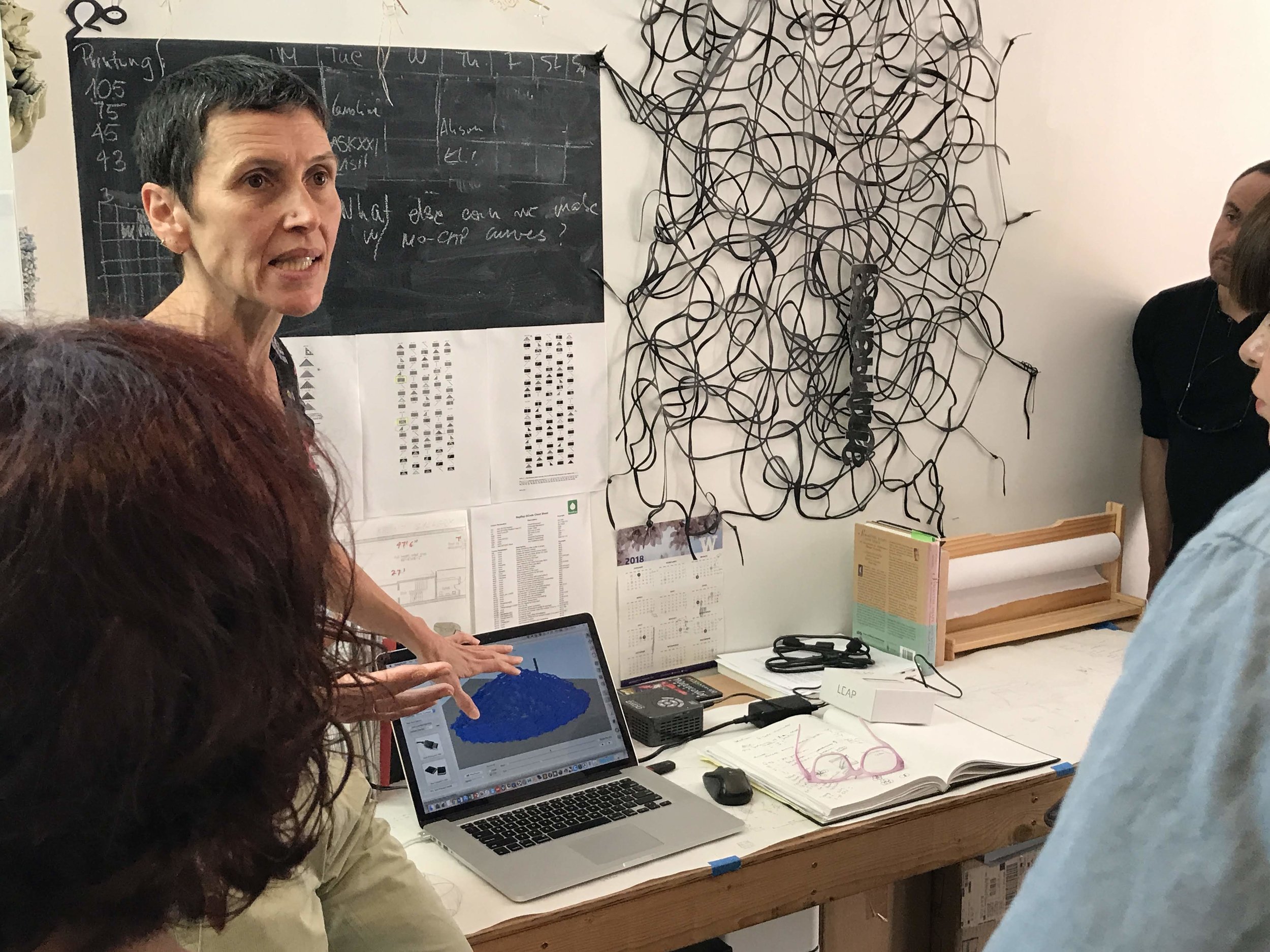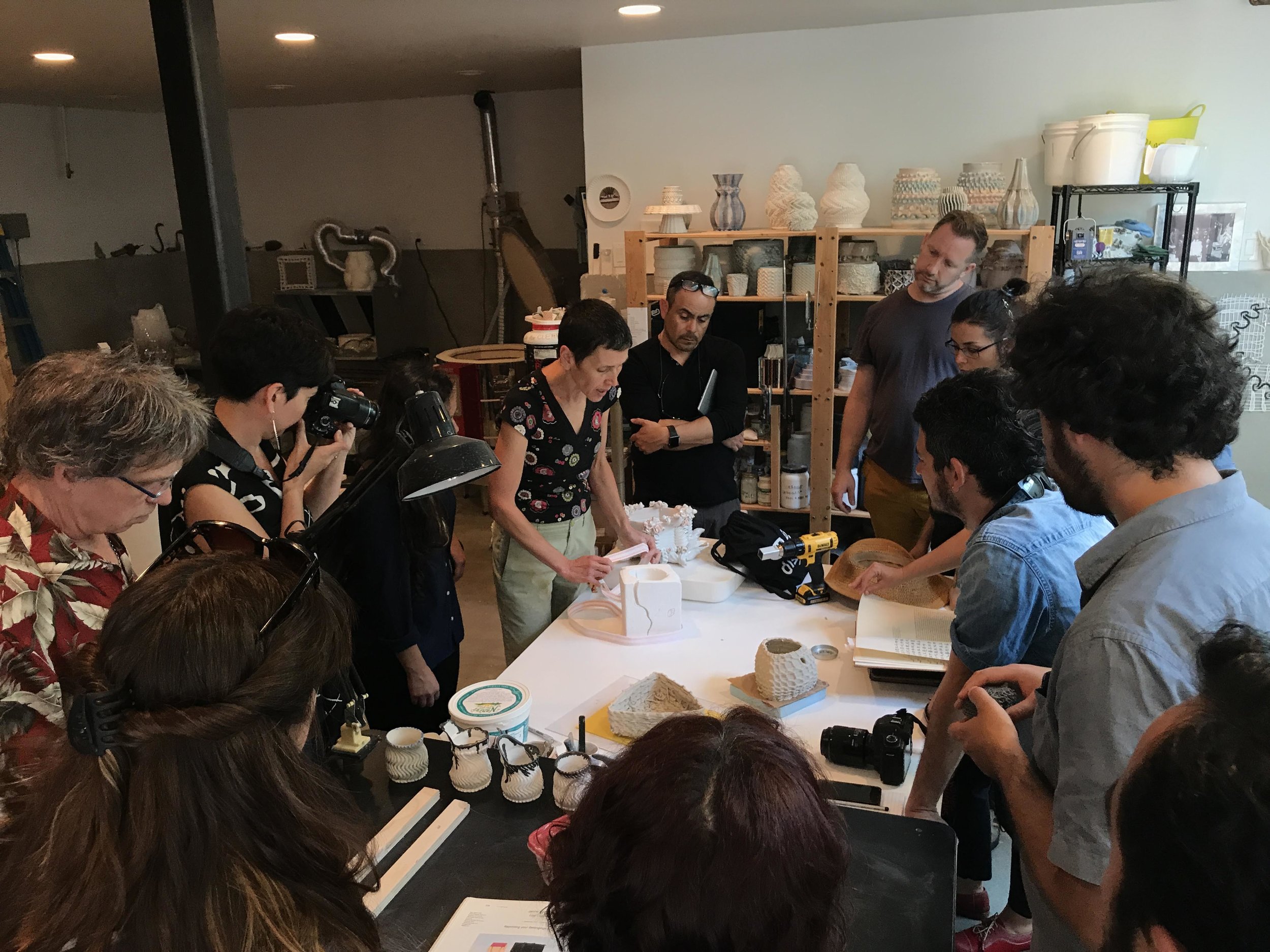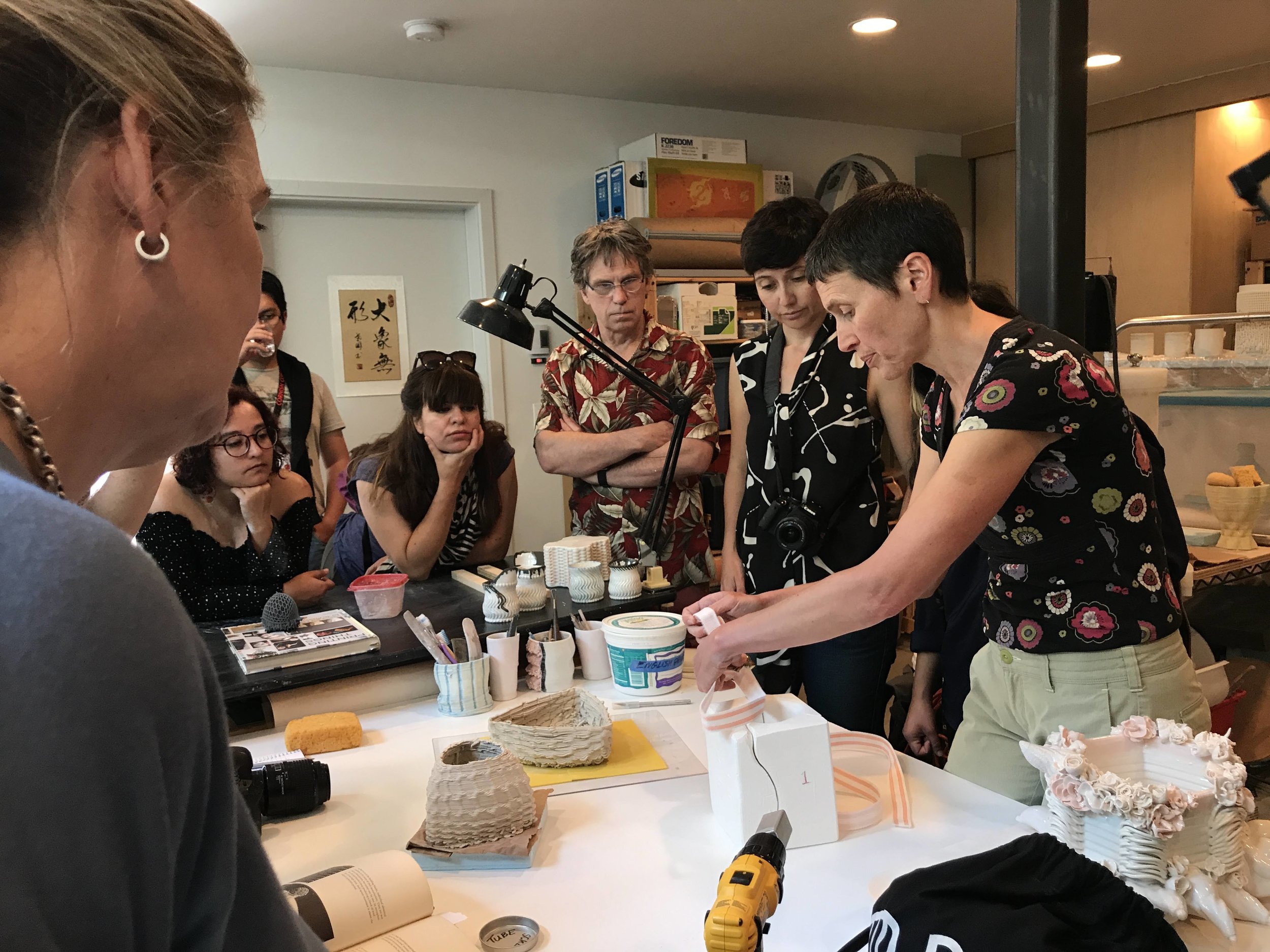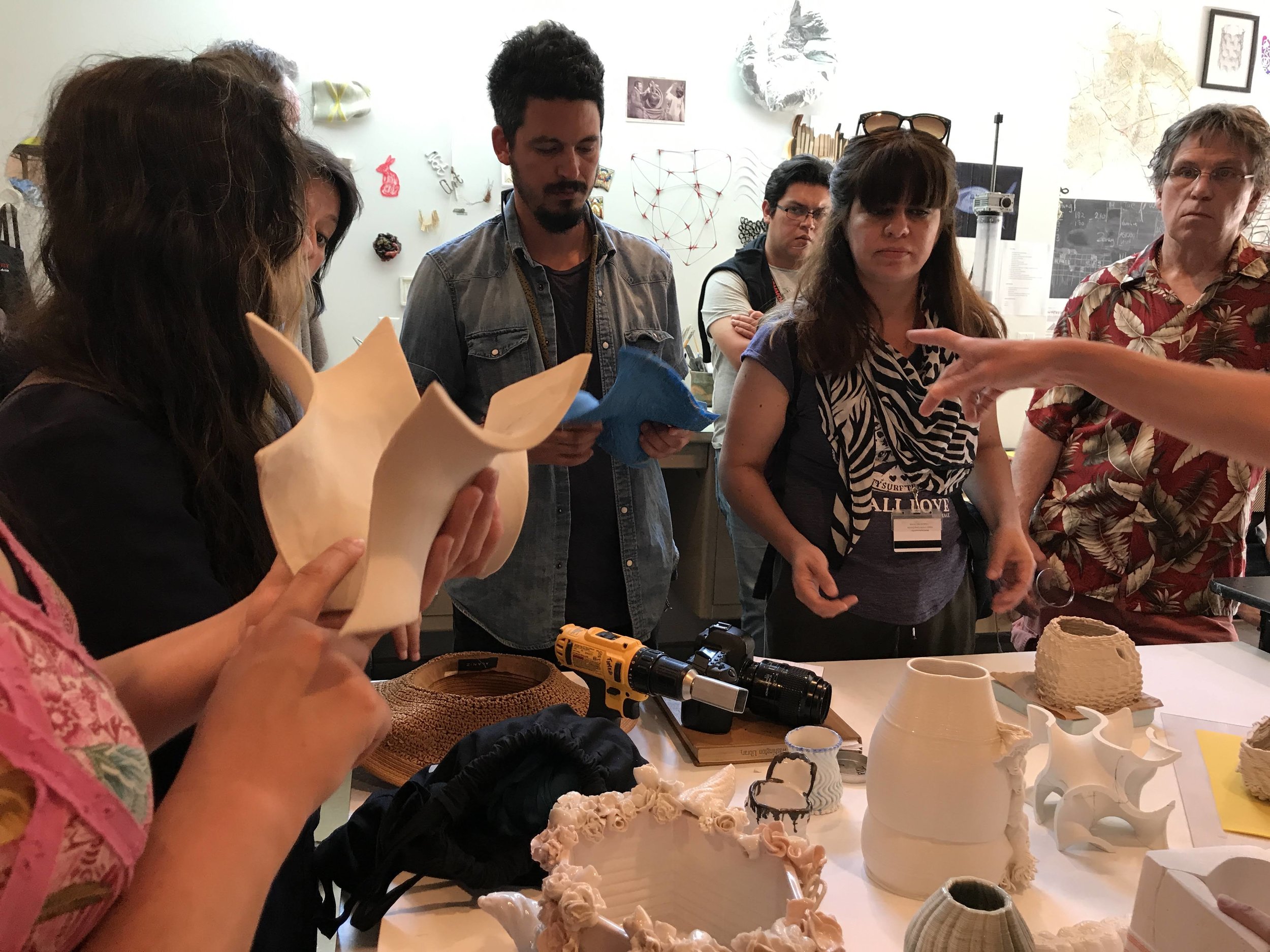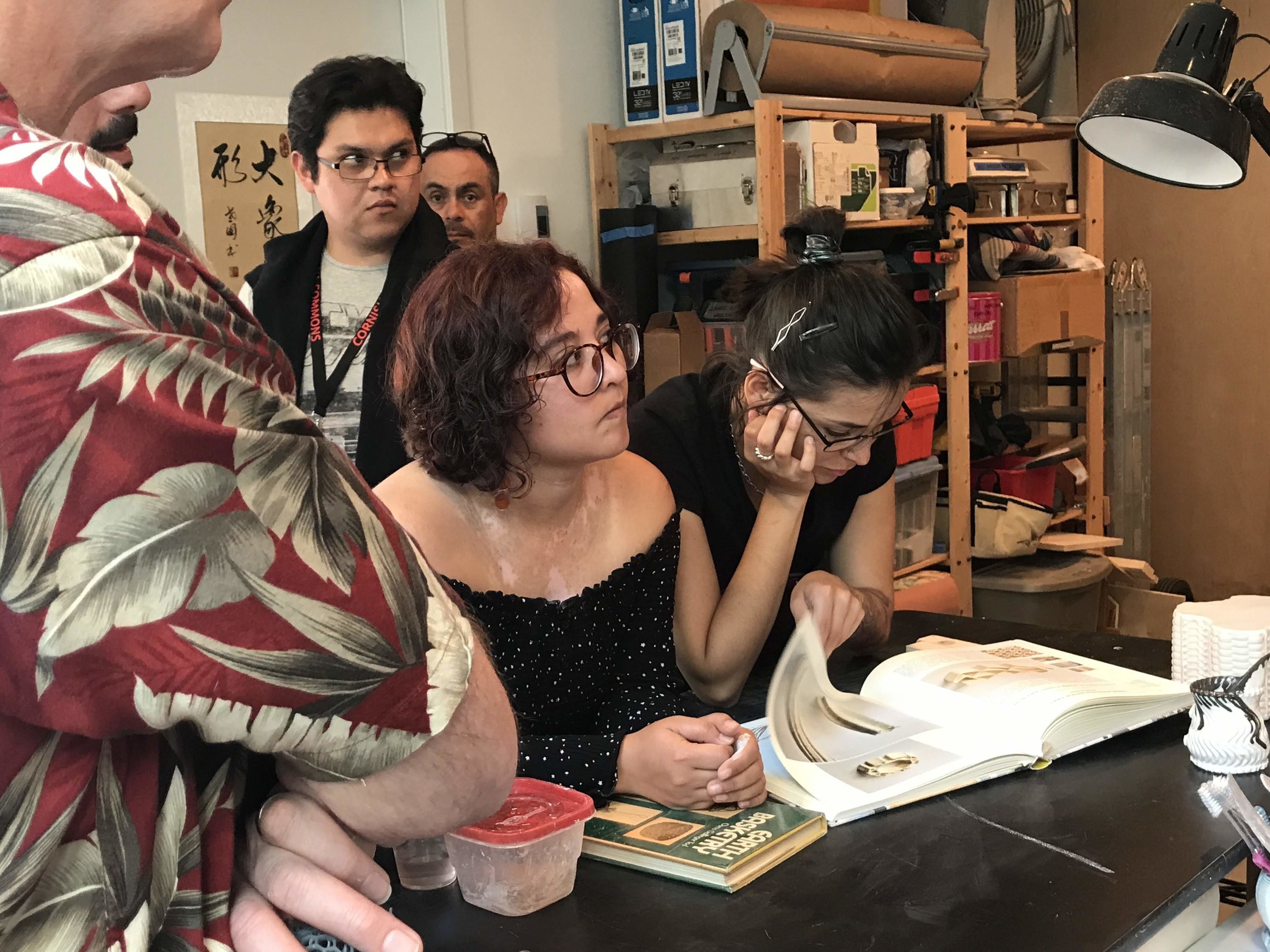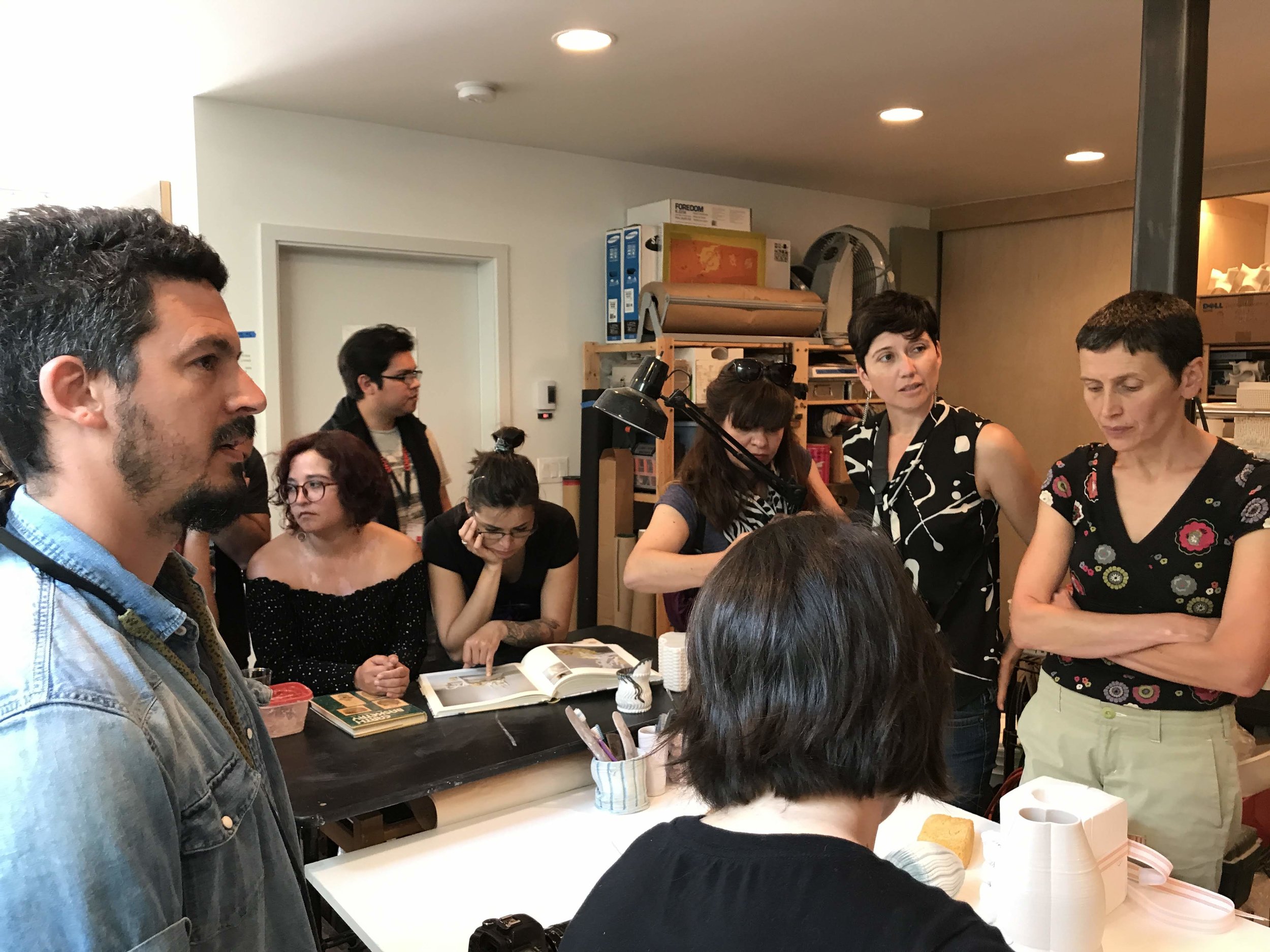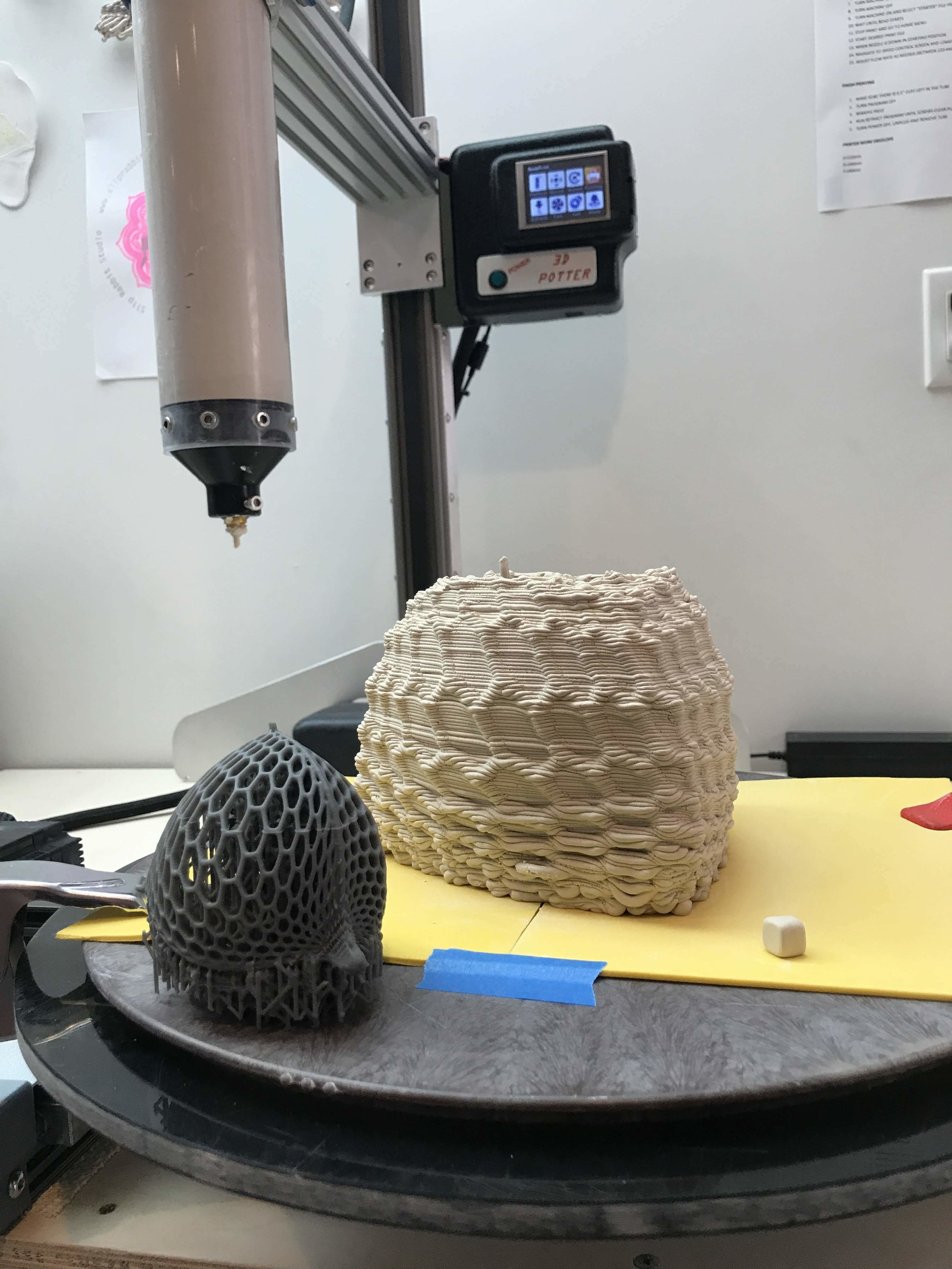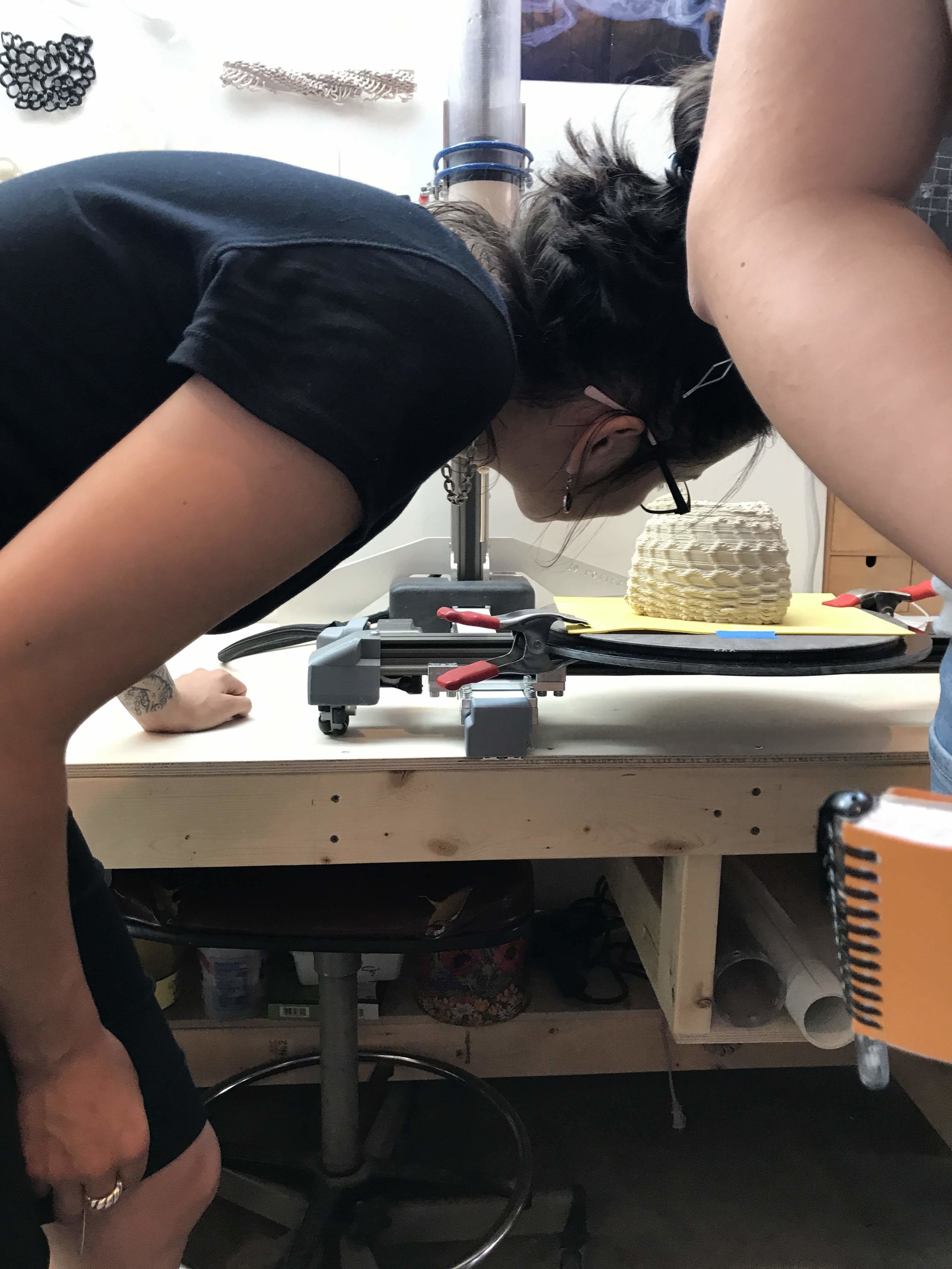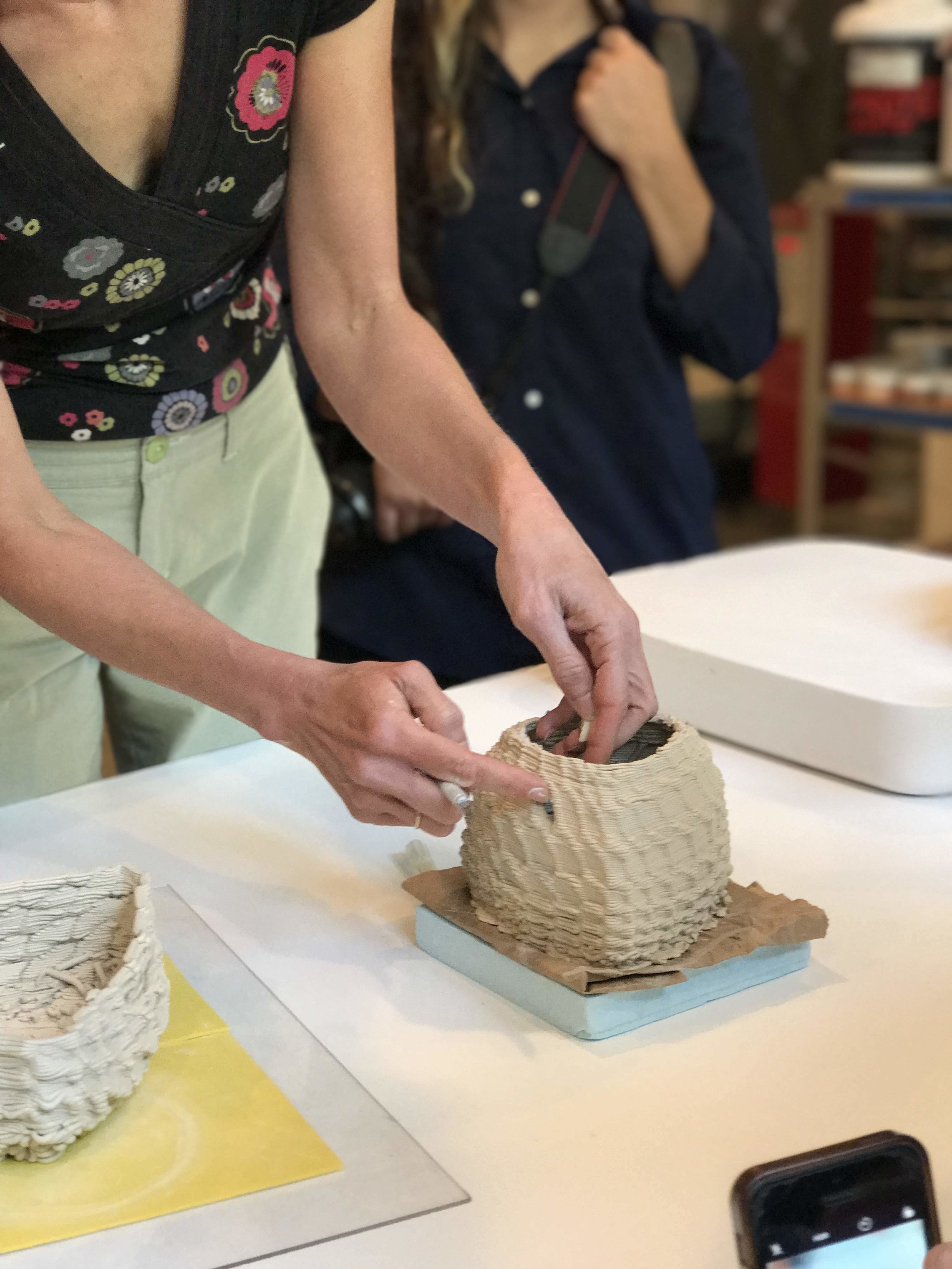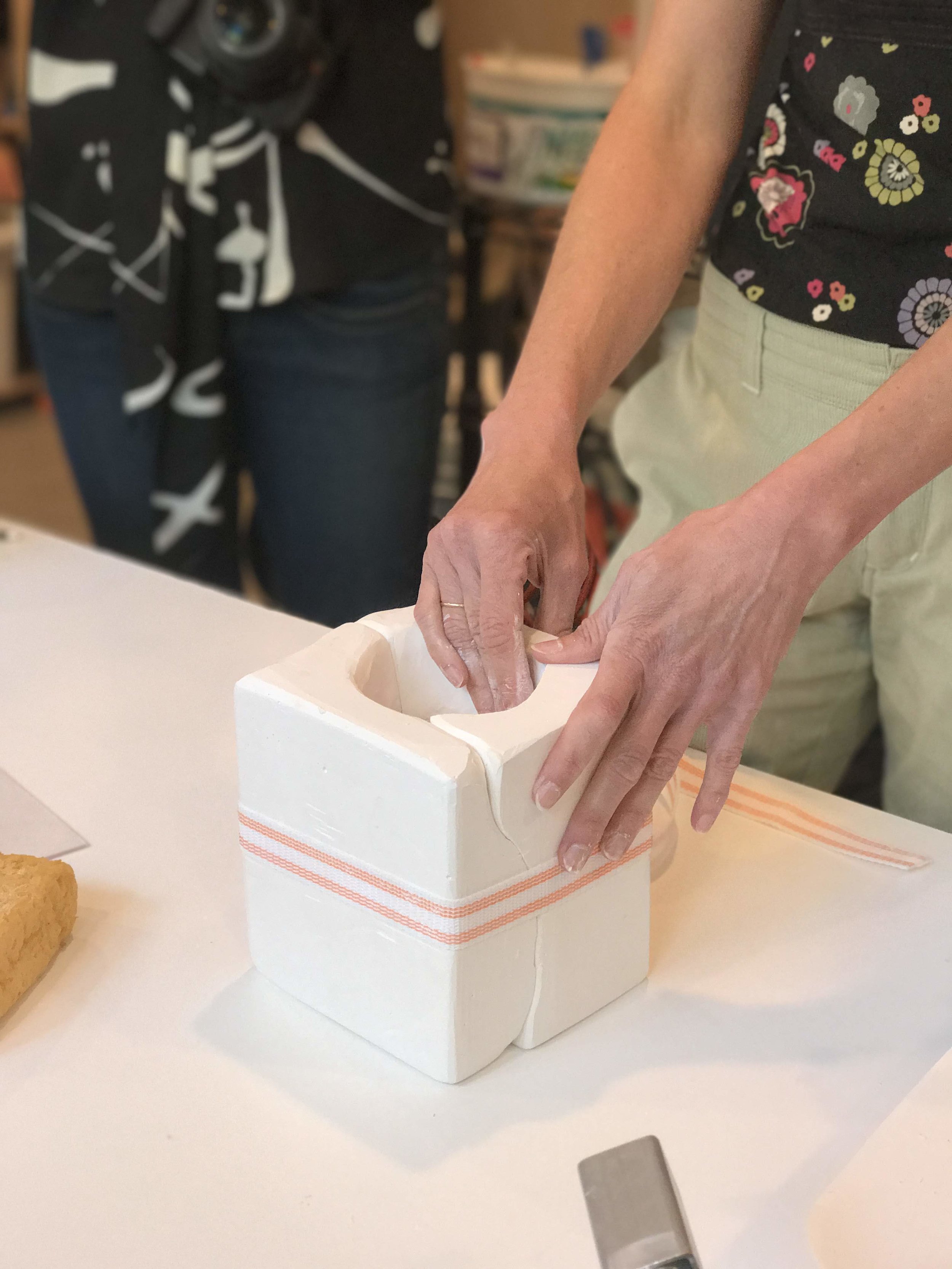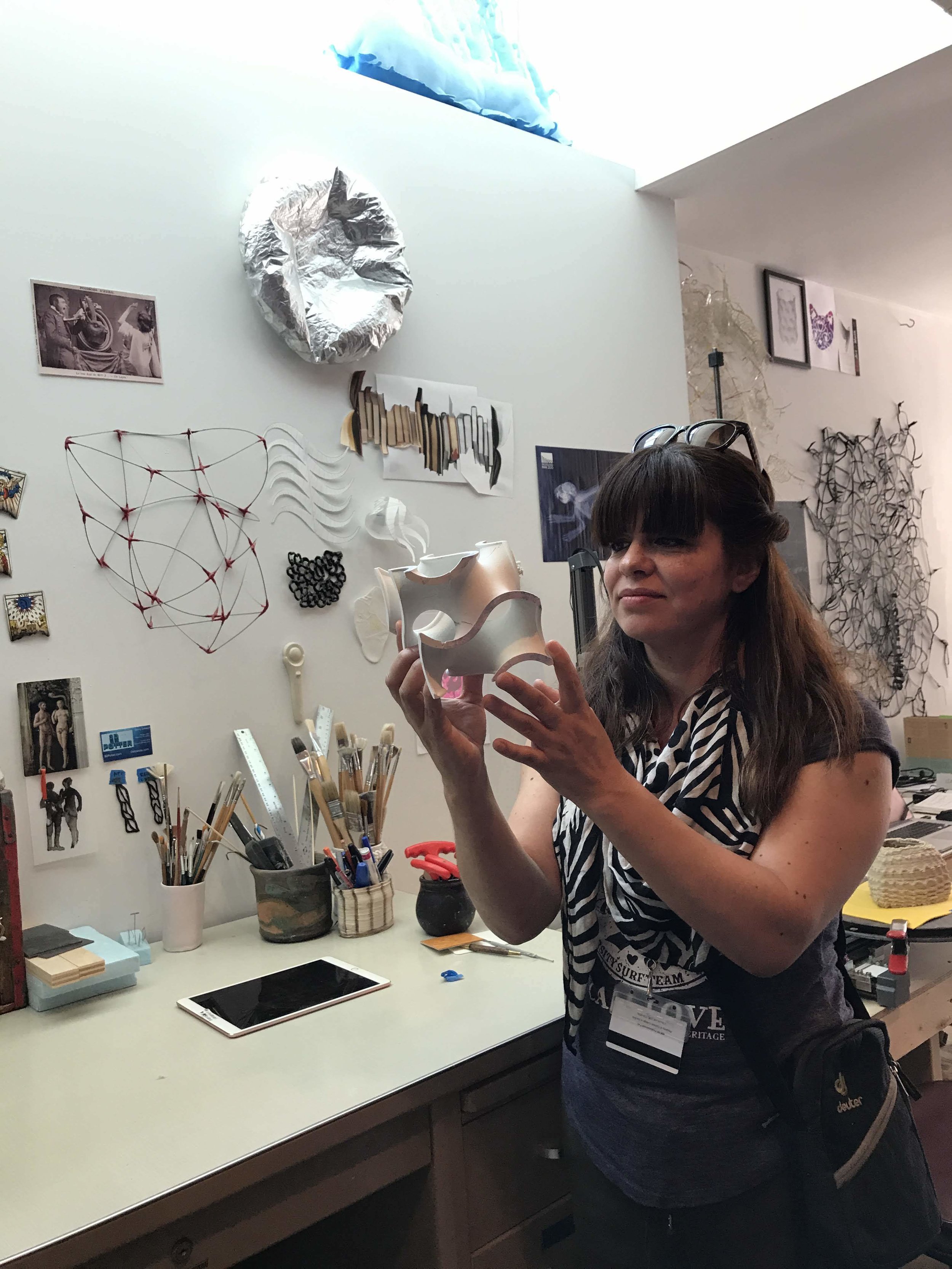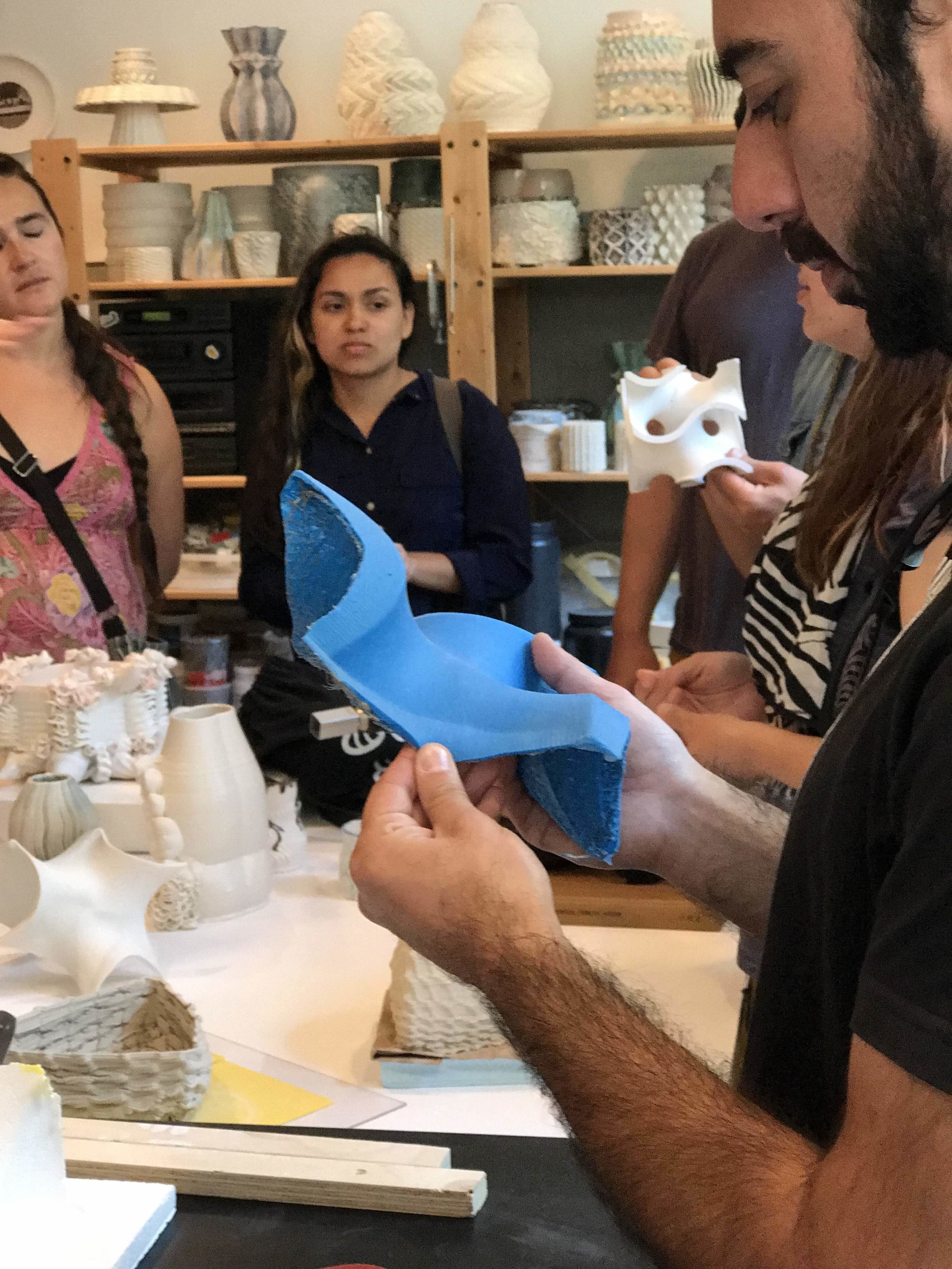We'd been looking forward to the studio visit by ASKXXI (Arts + Science Knowledge Building and Sharing in the XXI Century), a group of Chilean researchers, artists, designers, and educators. Their visit is part of Slip Rabbit's outreach efforts to establish creative and thoughtful local and global channels of knowledge sharing, science visualization and engagement with various practicioners and audiences.
During their residency in Seattle, the 2018-19 ASKXXI cohort has been exploring various lab and field work in marine and land ecology and has taken workshops focusing on state of the art digital technologies, including, VR/AR, digital illustration and, now, ceramic 3D printing.
It was a packed morning here at Slip Rabbit. The group filled our studio (standing room only!) with laughter and their energy was contagious. After the introductions, we set up a file of the diatom model made in Cinema4D by ASKXXI faculty and Cornish Design professor, Jeff Brice. Printing it gave Timea a chance to demonstrate challenges and benefits arising from the much larger scale and from the peculiarities of the ceramic material. Compared to traditional FDM (fused deposition modeling aka extrusion) printing, clay printing has to contend with more variables, giving rise to its artistic potential. Clay, when used wisely, is one of the the most sustainable and environmentally considerate materials. The printing process creates excellent conditions for 0 (zero!) waste use and there are many research examples of experiments with 3D printed ceramic in the restoration of coral reefs and as climate-friendly low-cost, locally-sourced building materials.
Timea also demonstrated the potential of traditional ceramic techniques, handbuilding and slipcasting, in combination with printing and discussed her current math-art research in self-generating complex systems that are based on simple rules. A number of wonderful ideas for the continuation of both our research and research paths taken by ASKXXI members arose from the visit. We are looking forward to witnessing the development of these and the positive impact on the critical environmental challenges that they may help to promote along the way.
